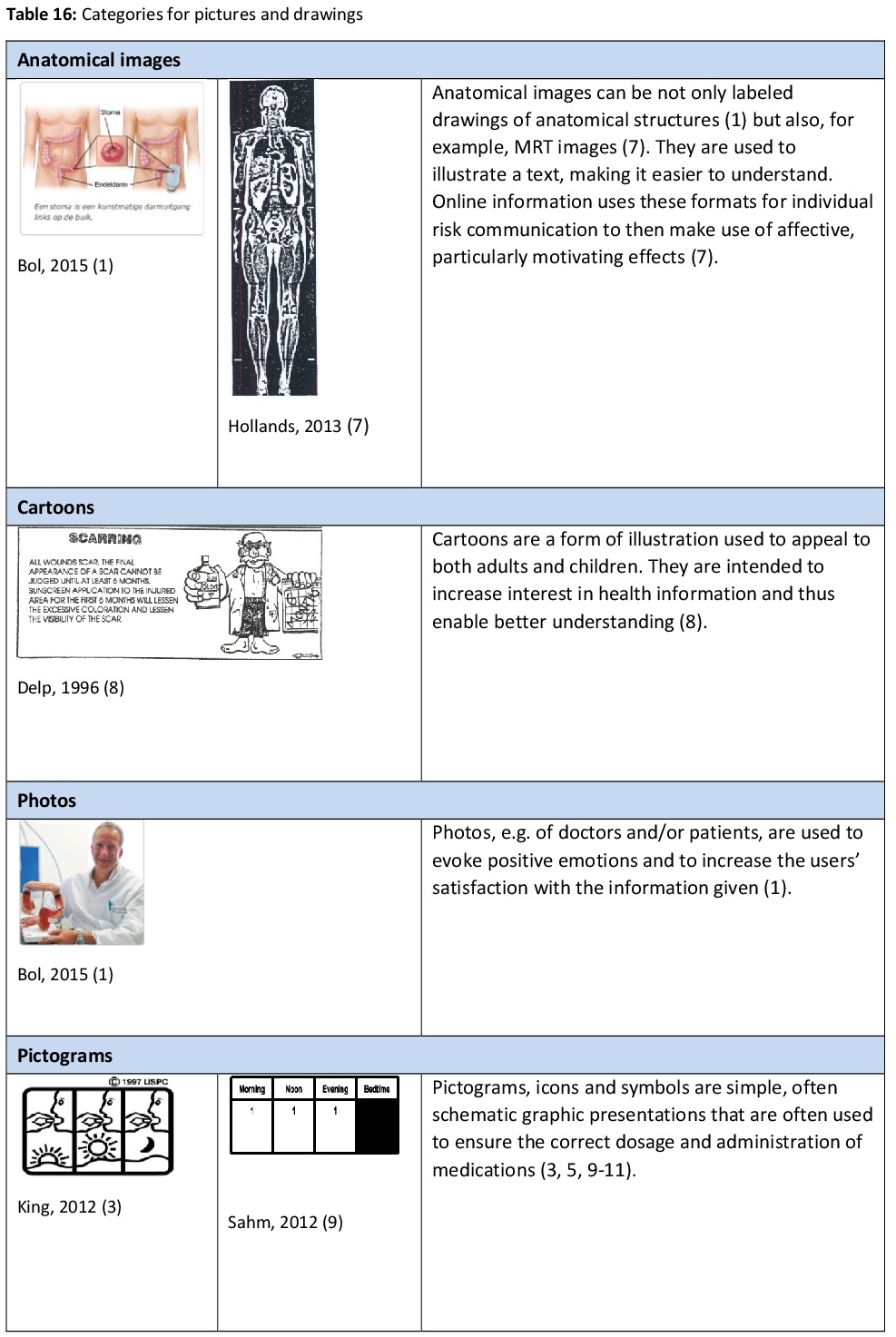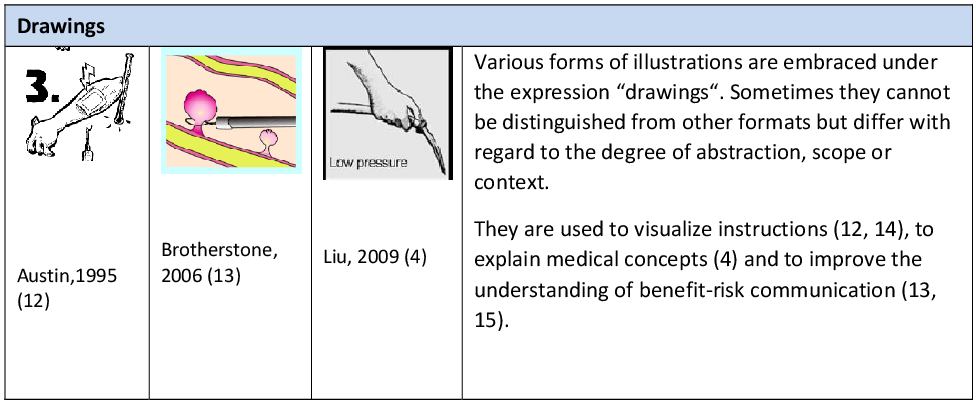Introduction
Pictures often say more than words. For this reason, easily understood and often self-explanatory symbols have been used for a long time on signs in public places such as railway stations, airports or sport venues. At a glance they show what is meant. Symbols or pictograms as well as anatomical images, cartoons, drawings or photos are being used increasingly in health information, making the statements and their contents easier for the readers to understand. The aim is for the contents to be understood better and quicker, to enable the written explanations to be remembered more easily and to contribute to making the information more satisfactory (1). Pictures may have an affective and/or cognitive effect and may be applied accordingly. Cognitive pictures such as pictograms or anatomical images are meant to supplement and explain the text. Affective pictures, such as photos of physicians or patients, should on the other hand evoke emotions and increase the attractiveness and credibility of the information given (1).
Supplementing information with pictures can contribute to better understanding (2). This is especially so for instructions (e.g. administering medications or measuring blood pressure). However, the presentation must always be clear and simple so that particularly people with a low standard of education or older people might profit from this (1-5).
Pictograms (also called icons or symbols) are very simple, often schematic illustrations that are often used to ensure the correct dosage is given during drug treatment. In 2007 the Institute of Medicine (USA) issued a standard for labeling medications (6), which in the meantime is also being studied in Europe. With regard to the pictograms, a standardized, uniform presentation should be aimed for (6).
Apart from being used in health information, pictograms are also seen in occupational healthcare and safety as well as in public institutions with the intention of preventing accidents or as information about work protection measures. The efficacy of pictograms in particular with regard to medication intake has been scientifically investigated.
The following explanation show which recommendations can be given for using pictures in health information. The various formats have been categorized as follows: anatomical pictures, cartoons, photos, pictograms and illustrative drawings (cf. Table 16).


